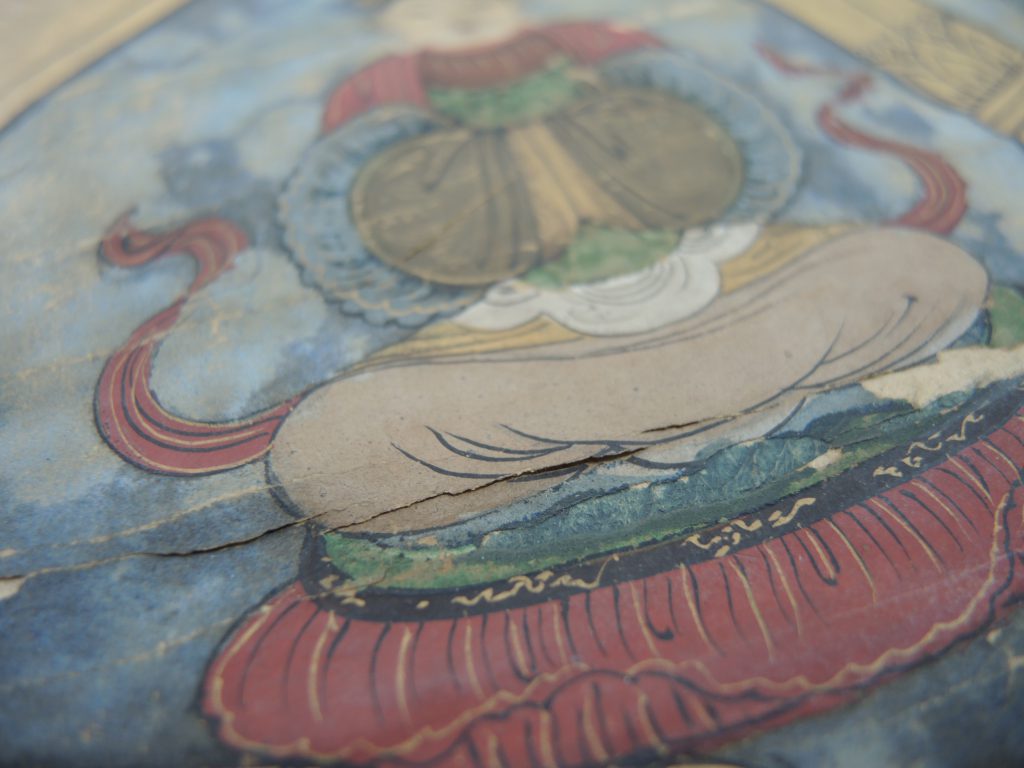Programmed for future display in National Museums Scotland’s newest Exploring East Asia gallery, this 17th century Japanese Buddhist mandala painting originated from an ancient temple in Nara, Japan, and would have served as the main image in a prayer ritual for good health.
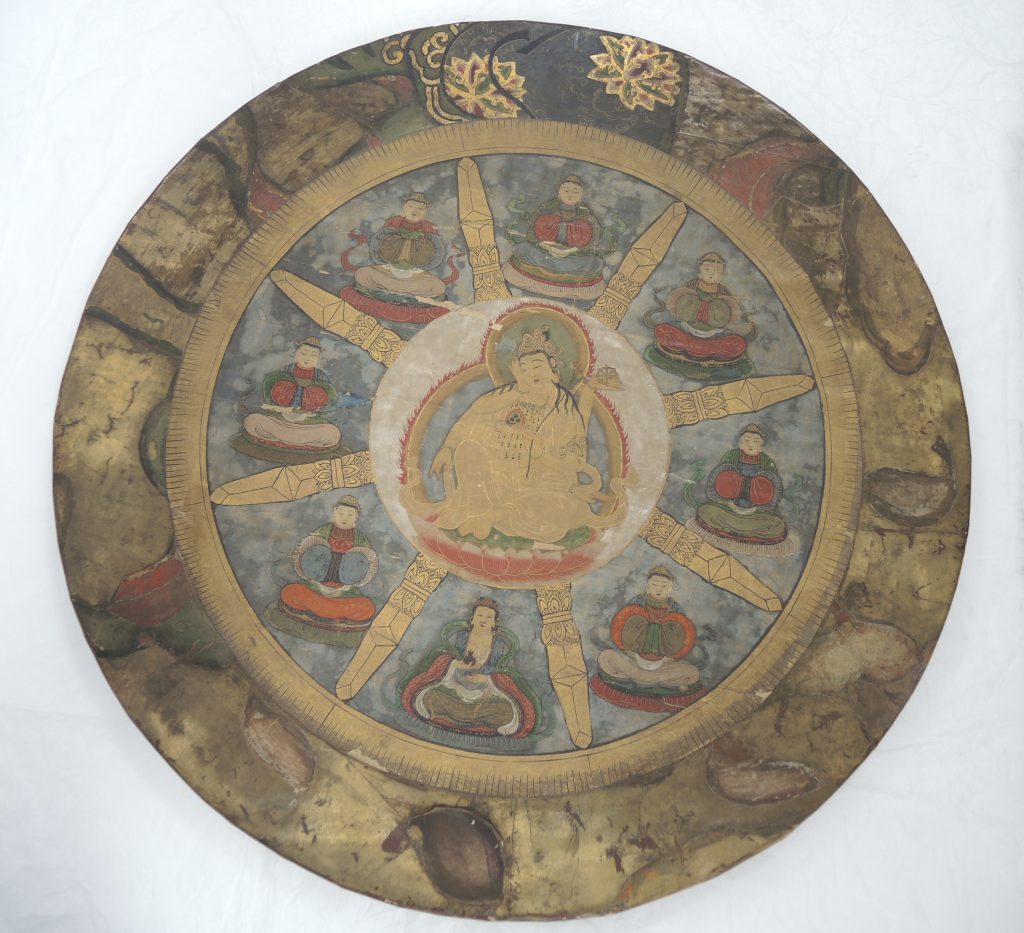
Depicted in the centre is the six-armed Nyoirin Kannon, a deity held in high esteem in the Japanese Buddhist faith and known to worshippers as the granter of wishes and one who offers boundless love to all.
The painting has never been on display at National Museums Scotland before and when I unearthed it from its box a few months ago, it still retained an evocative strong aroma of burning incense with a visible residue of sooty, greasy, gritty dirt over its surface.
Measuring 550mm in diameter, this Buddhist mandala painting is constructed from a primary support made from paper sections with the image designed from gold leaf, gold paint, coloured inks and watercolours. This is adhered to a wooden board constructed of two semi-circles with a horizontal join and secured together with three wooden battens. Old brown paper residues are adhered around the outer edges of the back of the board which could be left over from previous framing.
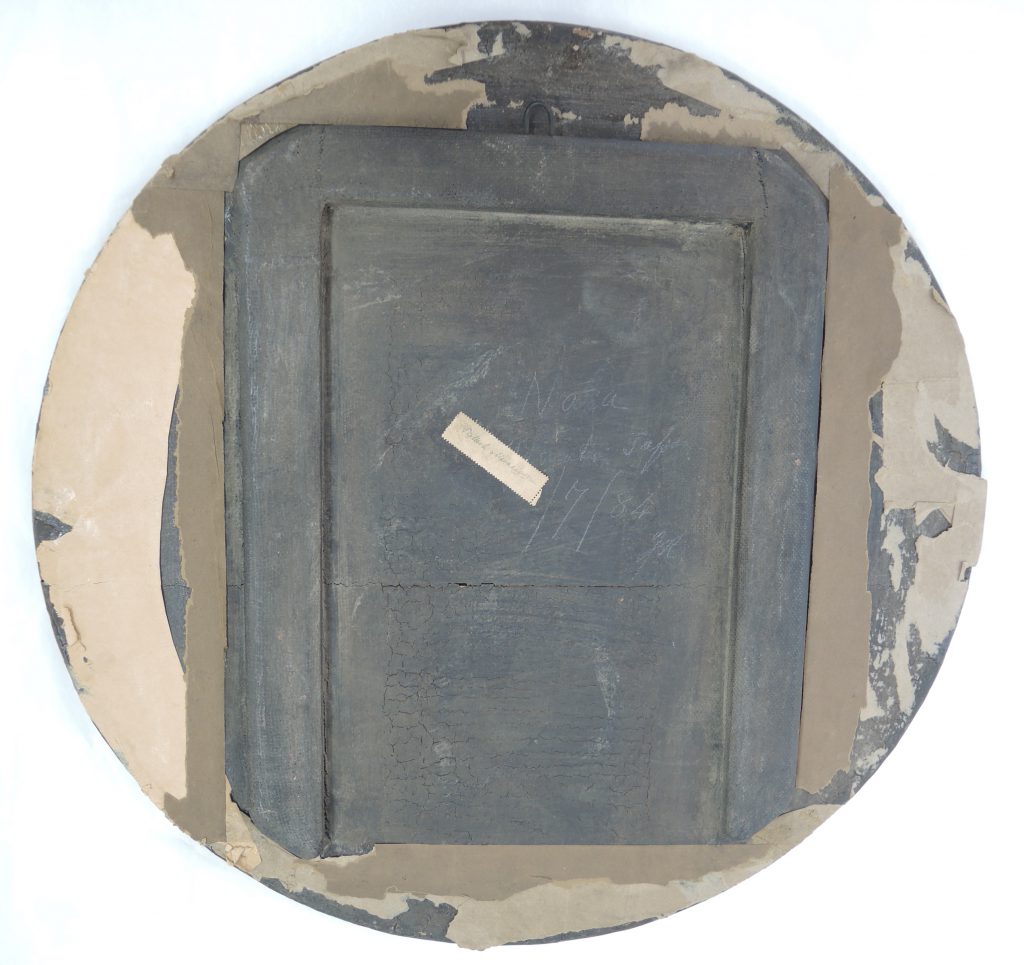
Condition
This painting was in poor condition when it arrived into the conservation labs. The wooden board was intact, with no evidence of insect damage or major cracking, but it was distorted and bowed. The painted paper surface had also suffered significant damage through the decades. With a covering of thick surface and engrained dirt, the paper layers were delaminating, horizontal splits and tears covered the surface and there were significant areas of loss. Worse was the overall ‘bubbling’ of the support where areas of the paper had detached from the wooden board, causing serious planar distortions.
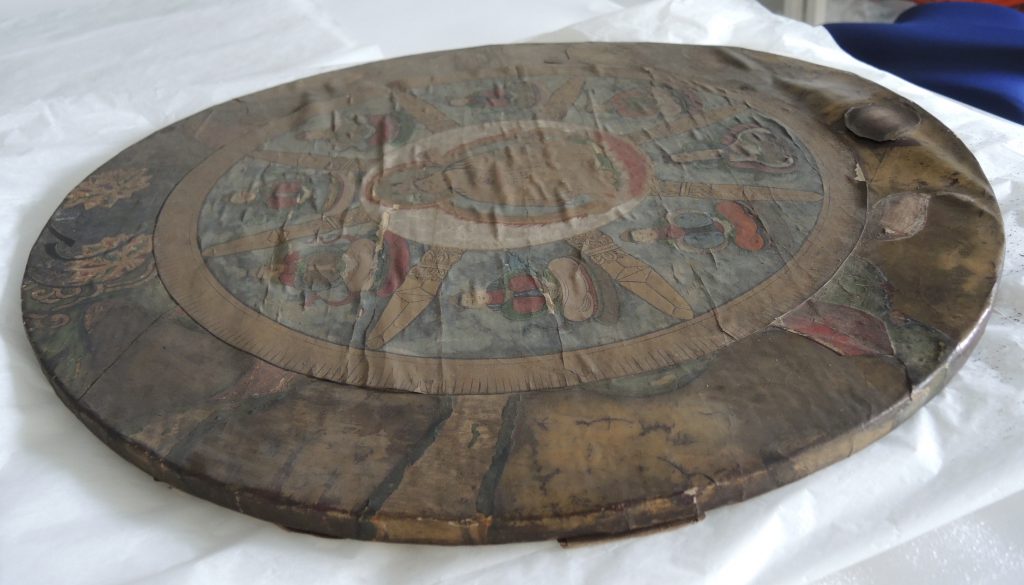
At some point, records suggest that this painting was housed in a frame but it is unclear when, for how long, or when it was removed. Evident too were old deteriorating repairs and retouchings, but we hold no notes of when these were undertaken. The image has been painted on both the paper layers and directly on to a prepared surface on the wooden board. Many colours have faded, there are areas of flaking paint, the blue pigment bears a mottled appearance from exposure to damp and the greasy dirt has obscured much of the lustre of the gold and red pigments.

Hanging on open display in a temple, with exposure to atmospheric pollutants, smoke and fluctuating environmental conditions, would all have contributed to its current fragile state.
Conservation Treatment
Surface cleaning:
Dry surface cleaning treatments using a soft brush, latex chemical sponge and slivers of eraser proved effective in removing the top layer of thick surface dirt but there was much more dirt to remove.

I didn’t want to use too much moisture when treating this painting as the media was sensitive to water based treatments. IDA (industrial denatured alcohol) and acetone solvents were tested but neither proved beneficial in any further dirt removal. Small saliva swabs were tried and proved successful in removing the more engrained dirt. Saliva contains the enzyme amylase and is a trusted technique across all conservation disciplines to aid in breaking down dirt on artefacts. I decided to undertake this part of the treatment before lunch rather than straight after! The areas of gold regained their brightness and it was astonishing to see how bright the red pigment was once the dirt was removed.
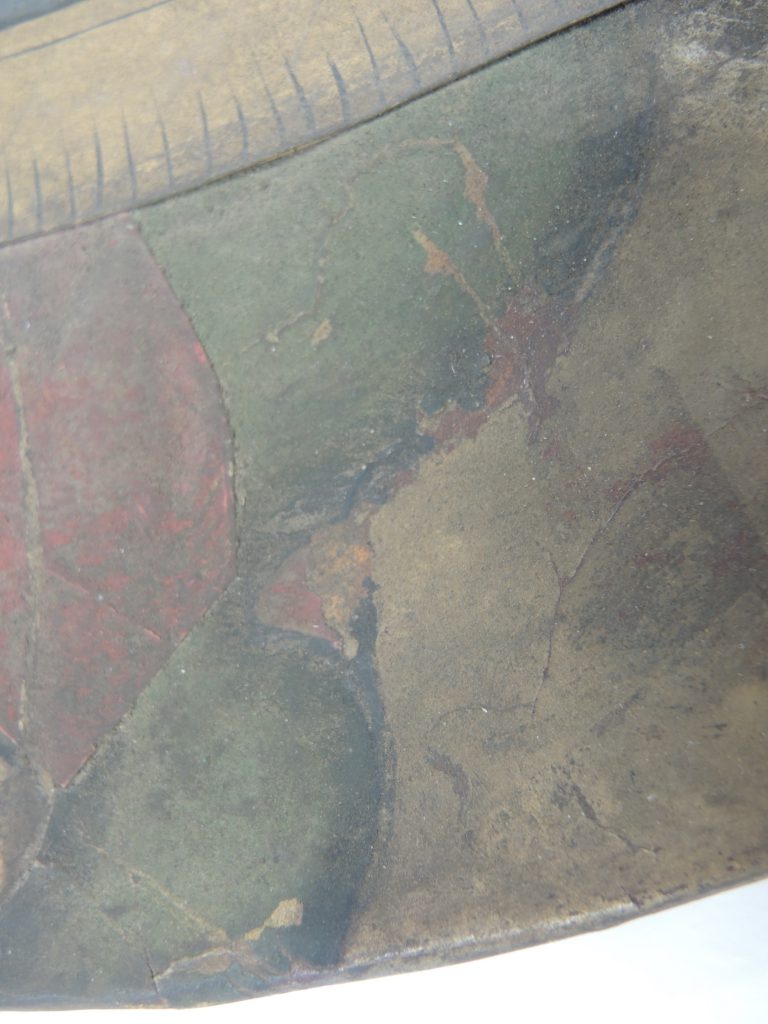
Before cleaning 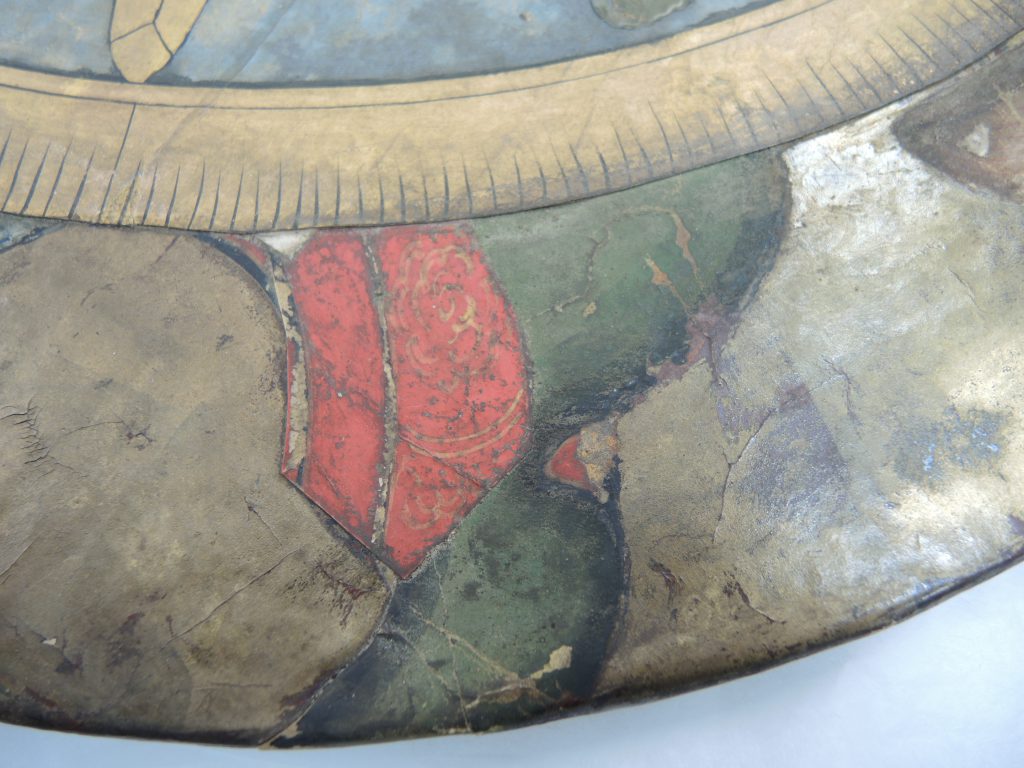
After cleaning
The image on the left shows an area of the painting before cleaning and the one on the right is of the same area once cleaned using dry cleaning and enzyme treatments.
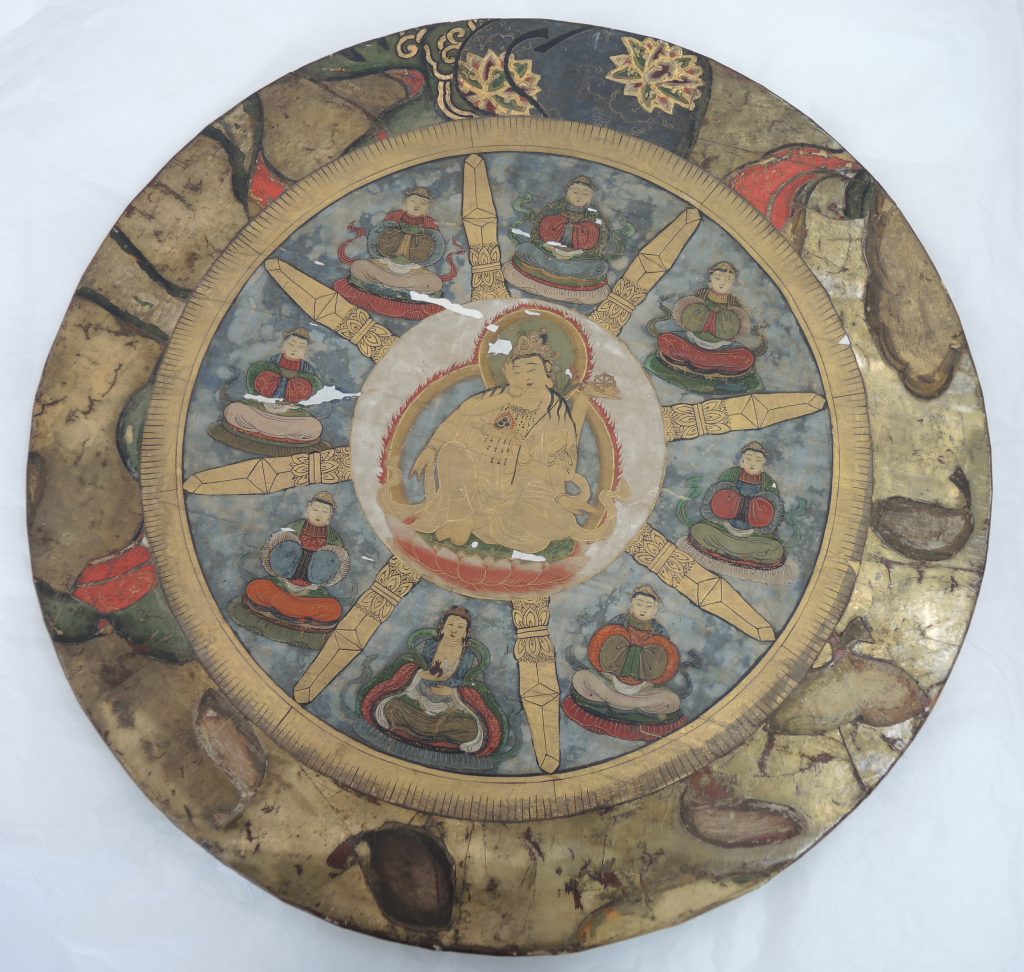
Repairs
Other than the areas of bubbling and undulation the paper was well adhered to the wooden board, so total removal of the paper to remove these structural imperfections was not an option. Instead I focussed on re-adhering and repairing the splits, tears and losses using traditional conservation adhesives and thin papers. The painted surface was really delicate and it proved very fiddly trying to get in to all the little cracks with the smallest of tools.
The image on the left shows some of the many areas of damage to the painting’s surface with splitting, cracking and losses. The one on the right is a photograph of the same area with the damaged areas repaired.
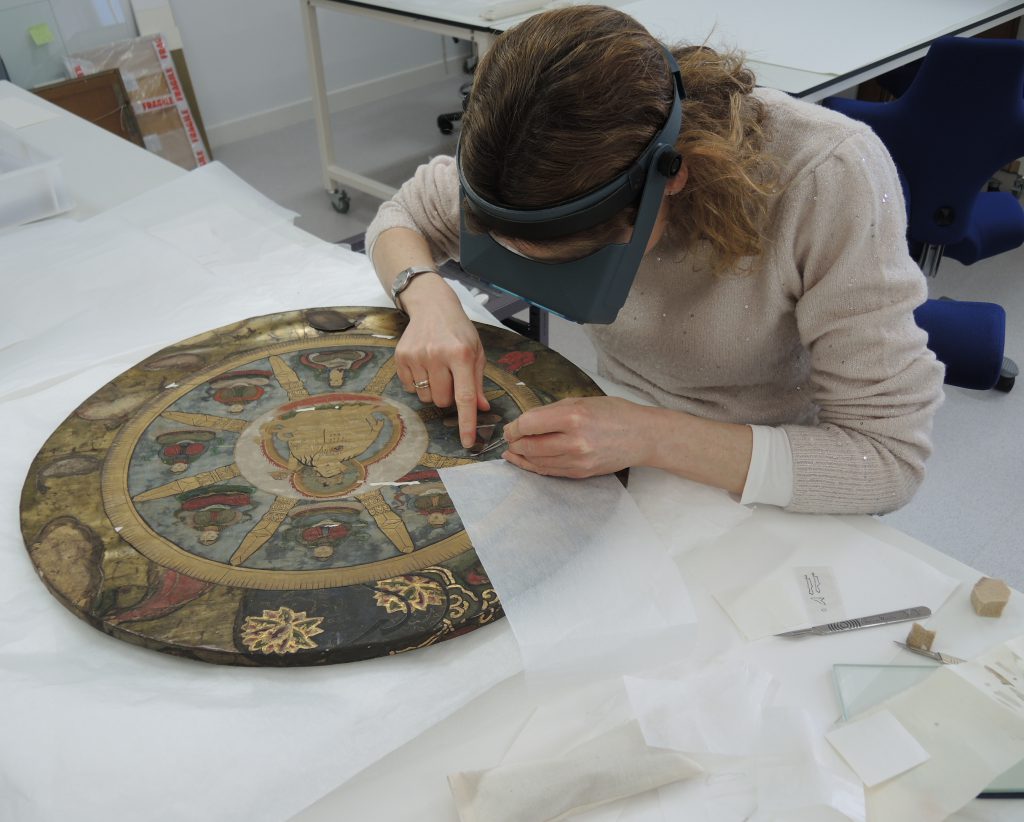
Retouching
To re-integrate the areas of loss back into the painting I need to re-touch them using watercolour paints applied as dry as possible. I was looking forward to this part of the treatment as it’s one of my favourite techniques but unfortunately lockdown commenced before I was able to complete this part and it has been put on hold. It will definitely be something to look forward to when we reopen.
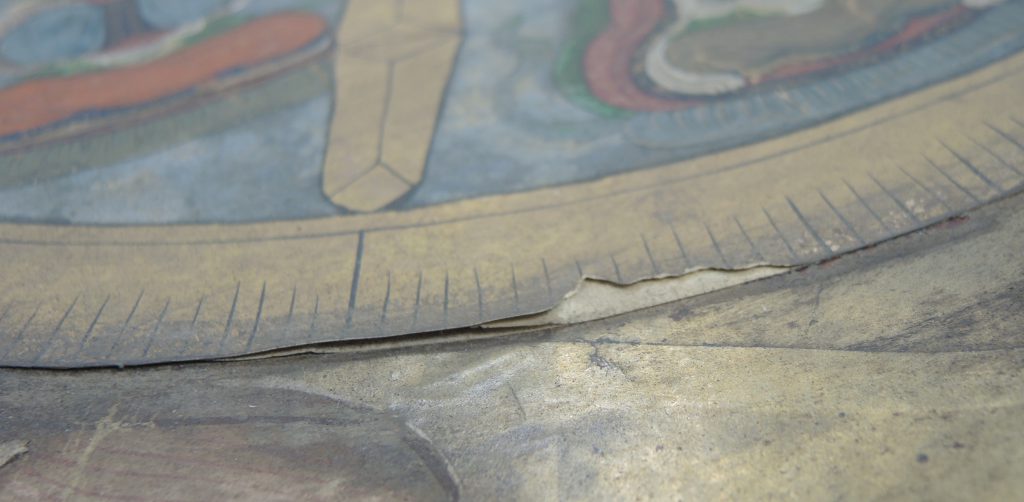
An area of loss and delamination. 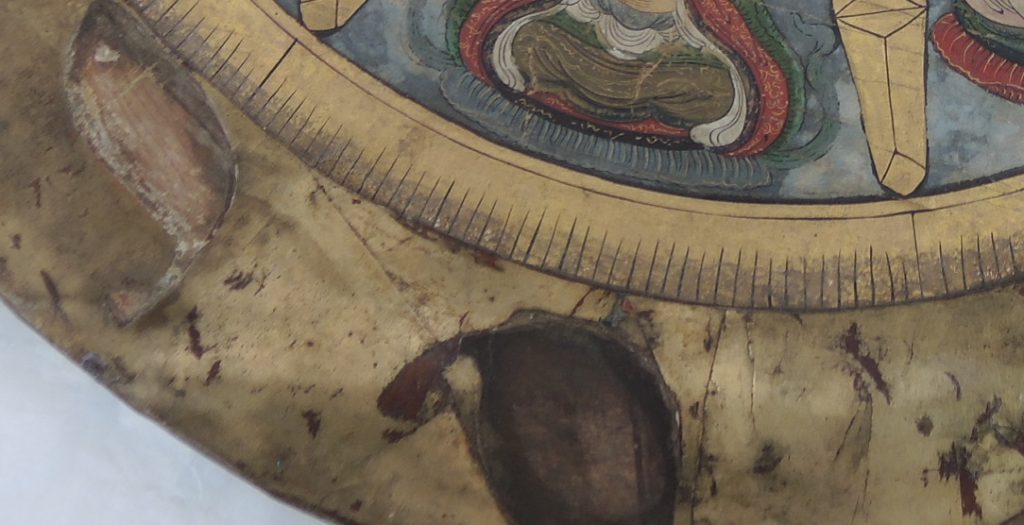
The same area that I repaired and retouched.
The backboard
After discussions with the curator I removed the old dirty and torn paper residues from the back of the wooden board by laying the painting face down on soft padding and used a scalpel and damp swabs. A paper label, contemporary to the object was found underneath the paper residues and the curator is in the process of translating it.
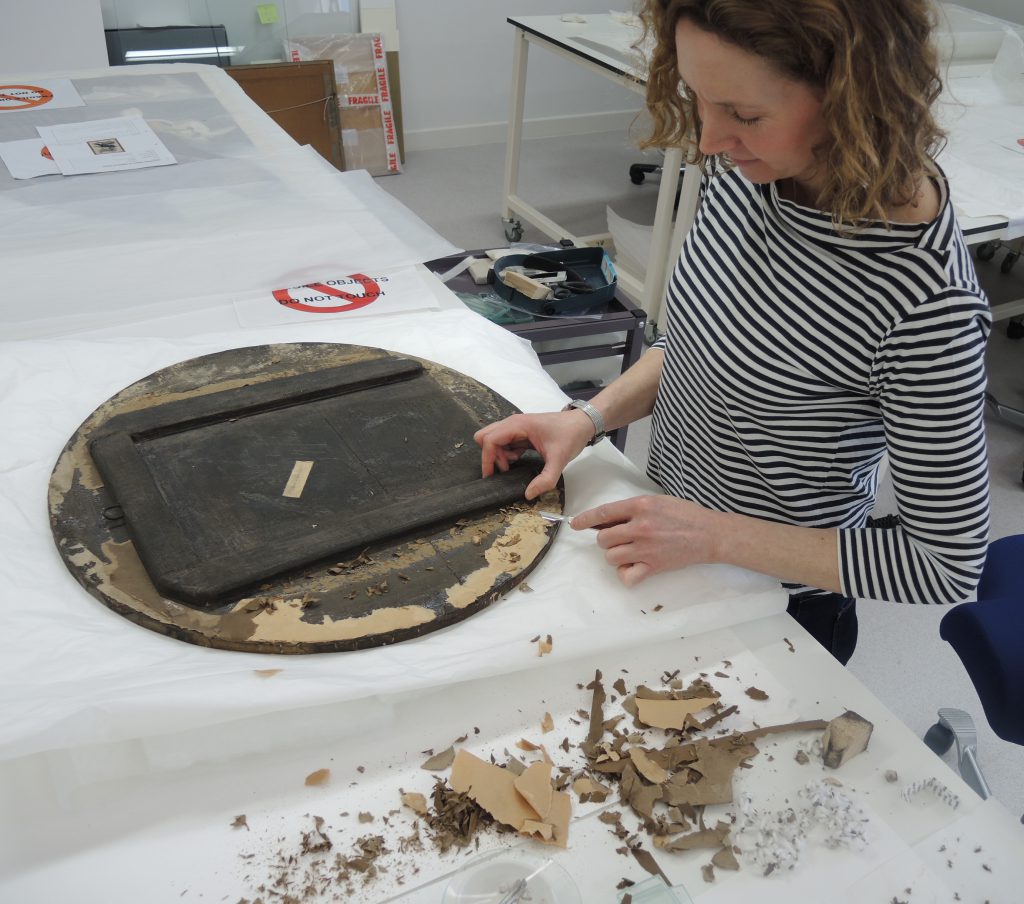
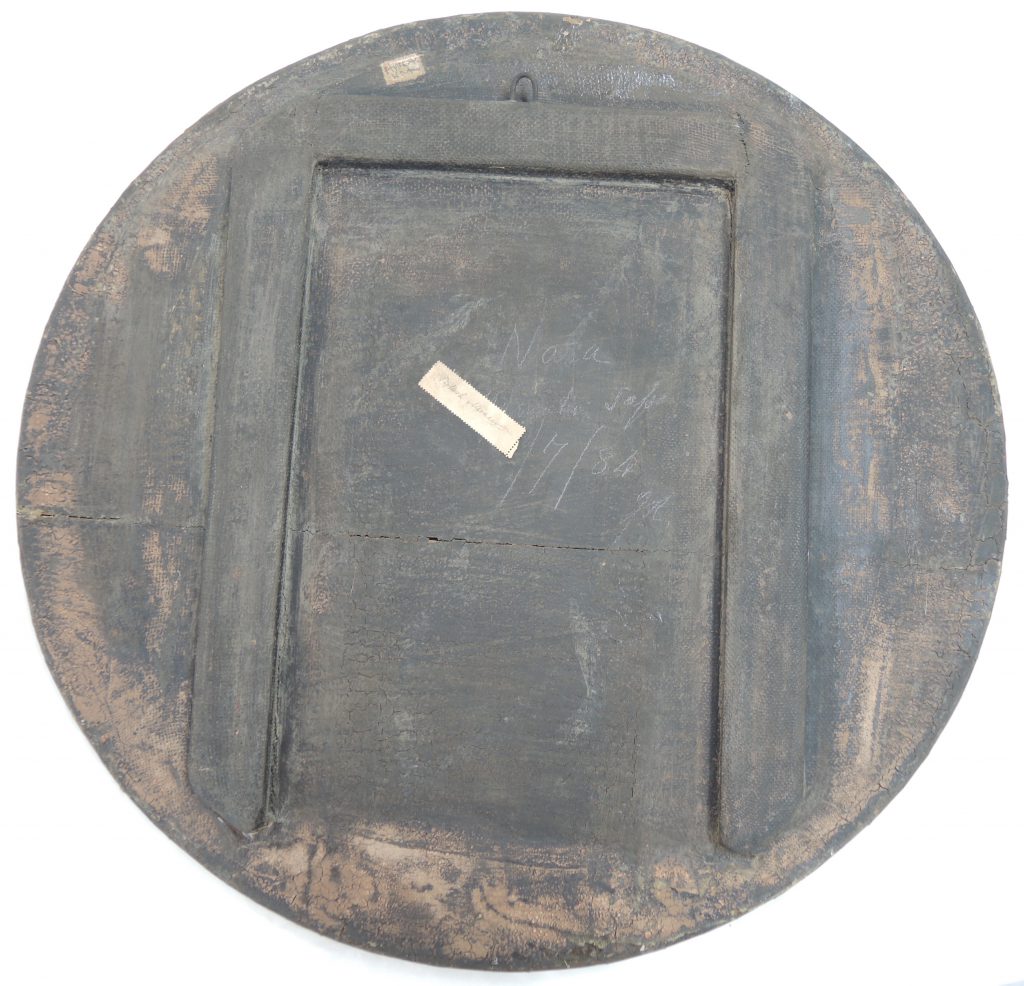
It is always a treat to work on an object in the museum’s collection that is really in need of a bit of TLC and I hope it won’t be too long before I can return to completing the conservation of this painting.

